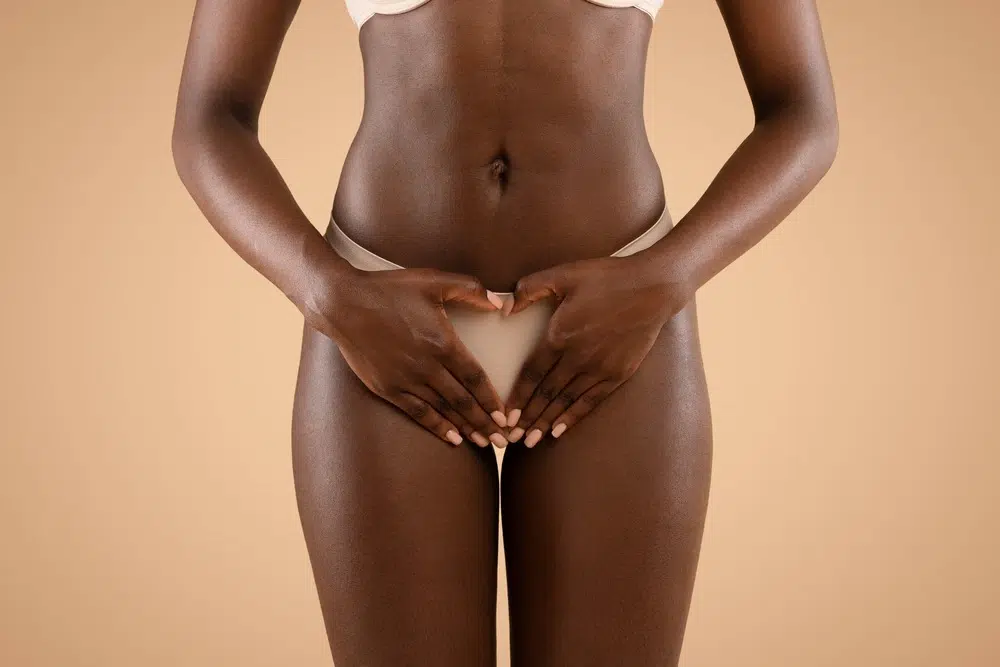- Bacterial Vaginosis and Urinary Tract Infections are two of the most common bacterial infections that affect millions of women each year.
- Although they both may seem similar, Bacterial Vaginosis is an infection that occurs due to an imbalance in the vaginal flora where Urinary Tract Infections affect the bladder, kidney, and urethra.
- The bacteria that is at the center of Bacterial Vaginosis, known as G. Vaginalis, can reactive the gene expression of residual E. coli, the bacteria that causes 80% of all UTIs, and cause a new UTI to occur.
- Antiobiotics may be a great tool for combatting UTI, but they do not work on G. Vaginalis.
- Both Vaginal Infections are common and easily treatable.
It’s not common to hear women speak openly about bacterial vaginosis or urinary tract infections, but it’s not uncommon that many women experience both BV and UTIs every year. Whether recurring or an isolated event, both BV and UTIs are uncomfortable infections that millions of women experience each year.
When your vagina is functioning normally and healthily, “good” and “bad” bacteria in the body coexist in relative harmony. These are the times when we feel more assured of our health and overall wellbeing, and it spills-over into our day to day lives.
But when the vaginal flora is disrupted and overgrowth of bad bacteria offset the ph balance of the vagina, vaginal infections that we dread and cause relative stress to occur. Two of the most common infections are Bacterial Vaginosis (BV) and Urinary Tract Infections, which millions of women experience each year.
Knowing the difference between these two common vaginal infections can mean the difference between a good mood and feeling in control instead of wondering what went wrong.
What is Bacterial Vaginosis (BV)?
Let’s start with the most important question: What is Bacterial Vaginosis? Bacterial vaginosis sometimes called vaginal bacteriosis, or simply BV, is a very common type of vaginal infection caused by a bacterial imbalance.
Specifically, BV occurs when anaerobes, or bad bacteria, outnumber the lactobacillus bacteria – which helps keep the vaginal environment slightly acidic to prevent bad bacteria from growing and causing a bladder infection. If there is a deficiency of lactobacillus or the prebiotics that feed these good bacteria, then bad bacteria may grow and cause the symptoms of BV.
Symptoms of BV include:
- Abnormal vaginal discharge (color change from white to milky white or grey),
- Unpleasant or fishy odor
- Change in vaginal pH
- Pain, itchiness, or burning in the vagina
- Burning sensation when urinating
- Itching around the outside of the vagina
- Cramps – such as a dull, persistent ache in the lower abdomen, distinct from typical menstrual cramps
How Bacterial Vaginosis is Diagnosed
Bacterial Vaginosis is commonly diagnosed in one of the following ways:
- Taking a pH test. The purpose of this test is to see whether or not the pH is higher than optimal, which would be over 4.5. pH falls on a scale between 0 and 14, where 0 is acidic and 14 is Basic.
- Wet Mount Test. A sample of vaginal discharge is checked for bacteria by seeking out white blood cells, and clue cells. When clue cells are present, it means you may have bacterial vaginosis.
- Whiff test. The whiff test is exactly as it sounds. A special solution is added to a sample of vaginal discharge to check if an odor is created. An unusual ionic or metallic odor typically means BV is present.
Medical treatment options for BV
- Taking antibiotics for a period of time, however, it’s something we aren’t fans of due to an antibiotic’s non-specific nature. What this means is that these medications typically attack all bacteria. It may sound good in the beginning, but let’s remember that not all bacteria are bad bacteria. Probiotics are live microorganisms, also known as beneficial bacteria, that create lactic acid when they consume prebiotics such as D-mannose. This lactic acid is used as a natural defense to ward off anaerobes and pathogens. When you take doctor-prescribed antibiotics, it may kill these friendly bacteria, too.
- Metronidazole (vaginal cream, vaginal gel, and pills) is one of the most commonly prescribed antibiotics for this condition. The second option is Clindamycin vaginal suppositories. Both of these conventional treatment strategies can be helpful, but they are not 100% fool-proof. This is because conventional medicine is not capable of preventing the recurrence of the infection. Nearly 60% of women who have been diagnosed with Bacterial Vaginosis will get experience it again, even after treatment. Also, antibiotics may destroy the good bacteria as well, leaving you susceptible to other infections such as a yeast infection.
Natural treatment options for BV
- Probiotics: Vaginal probiotics are vital! They provide healthy strains of bacteria to your vaginal flora so that you can continue to produce the natural defenses the vaginal flora needs to be balanced. A great habit you can start right away is taking a probiotic supplement in order to introduce new lactobacilli to the body. If you want to do more than just take a supplement, you can also pair it by adding probiotic-rich foods into your diet. These foods include yogurt, kefir, and fermented foods such as kimchi.
- Prebiotics: Prebiotics have been a hot topic as of late. With everyone know understanding the importance of consuming probiotics they are wondering how to take their microbe game up a notch. That’s where prebiotics come in! Prebiotics are the dietary fibers and glucose that probiotics consume in order to make lactic acid and hydrogen peroxide. By adding prebiotics to your vaginal wellness routine, you ensure that probiotics are constantly feasting in order to function properly!
- Cranberry: Cranberries are filled with amazing antioxidants known as proanthocyanidins, or PACs. These compounds keep your vaginal wellness optimal by not allowing bacteria to stick the urinary tract and create a biofilm. What this means is that when you consume cranberry extract, like Pacran found in Happy V Immune Boost, you begin the process of flushing bacteria out of your body. So, next time when you’re ordering a fresh juice try opting for a cranberry juice or you can also have them as supplements – like in our happy V daily Pack!
What is a Urinary Tract Infection (UTI)?
The Mayo Clinic defines a urinary tract infection as an infection occurring in any region of the urinary tract such as urethra, bladder, ureters or kidneys. UTIs mostly occur in the lower region of the urinary tract, specifically the bladder and urethra.
Urinary tract infections are interesting because they technically are not vaginal infections since they occur in the urethra, bladder, and kidneys. However, because the bacteria can stem from the vaginal flora, this infection may be directly and indirectly related to your vaginal health.
Urinary Tract Infections occur when bacteria that usually live inside the bowels make their way up to the urinary tract. E. Coli, for example, causes up to 80% of all UTI cases. These bad bacteria latch on to the urinary tract using a hook-like arm known as the flagellum hook.
When the bacteria latch on, other bacteria then begin to latch onto each other creating a dense biofilm of bacteria. This biofilm causes infections and the painful symptoms associated with UTIs.
This bacteria can happen anywhere in the urinary tract but usually occur in the bladder.
UTI Symptoms
- A frequent, strong urge to urinate
- A strong smell of urine
- Burning and irritation during urination
- Change in appearance of urine (from clear to cloudy), or in color of urine (from pale yellow to dark yellow or reddish-pink)
- Pelvic pain, especially in women
- Nausea, vomiting, and chills
How to test for UTIs
Common tests and produces that your doctor (or gynecologist) may use to determine whether or not you have a Urinary Tract Infection Include.
- Urine Sample Analysis. When your doctor conducts a lab analysis, he or she is looking for white blood cells, red blood cells or bacteria to make a determination of whether or not you have a UTI.
- Bacteria Cultures. This type of test means using a bacteria culture to determine exactly which bacteria is causing your infection and can help determine which medication would be most effective.
- Urinary Tract Imagery. If your UTIs are recurring and medication isn’t working, your doctor may want to conduct a more advanced screening test to understand what the underlying problem is. These include ultrasound, a computerized tomography (CT) scan or magnetic resonance imaging (MRI)
- Using a scope to see inside your bladder. If none of the above are yielding results, your doctor may perform a cystoscopy. The cystoscope is a long, thin camera that inserted in your urethra and passed through to your bladder.
Treatment Options for UTI
- Drugs such as Trimethoprim/sulfamethoxazole (Bactrim, Septra, others), Fosfomycin (Monurol), Nitrofurantoin (Macrodantin, Macrobid), Cephalexin (Keflex), Ceftriaxone.
- You can take cranberry pills for vaginal health, which can help with a bladder infection and kidney infection without any side effects. Cranberry dietary supplements, not cranberry juice, are great and can help clear up the common symptoms that are associated with UTIs!
Can UTIs and BV Cause Each Other?
According to the Washington University School of Medicine, bacterial vaginosis can trigger recurring urinary tract infections. Urinary tract infections are caused by E. coli bacteria, whereas BV is caused by bacteria such as lactobacillus, Prevotella, Gardnerella vaginalis, etc.
Gardnerella vaginalis, the bacteria responsible for causing bacterial vaginosis, has the ability to activate hidden E. coli from a previous urinary tract infection. The bacteria multiplies and causes a recurrent UTI.
Although E. coli can also cause BV sometimes, it is very unlikely that E. coli from a UTI can travel to the vagina to cause bacterial vaginosis. This diminishes the chance of developing bacterial vaginosis as a result of an already present UTI.
These findings may also help explain why women commonly experience UTIs after sex. G. vaginalis, the vaginal bacteria that causes BV, is commonly found in men and may be moved into the urinary tract during sex.
What’s even more interesting? The common UTI antibiotics that are prescribed typically do not treat a woman of G. Vaginalis bacteria.
Can UTIs and BV Co-Occur?
Unfortunately, bacterial vaginosis and UTIs can occur simultaneously when Gardnerella vaginalis of BV activates dormant E. coli to cause a recurrent UTI. According to a study conducted by Sumati and Saritha, about 42.27% of the women in their study who had BV also experienced a concurrent urinary tract infection.
In the study it was speculated that the association of BV with UTI (vice versa) probably begins the same way that Bacterial Vaginosis alone occurs:
“with an increase in the pH of the vagina flora because of reduction of vaginal lactobacilli-producing lactate and hydrogen peroxide. The normal vaginal flora may be replaced by predominantly anaerobic flora.”
And the most shocking results of this study? The study proved that women who were experiencing Bacterial Vaginosis showed a significantly increased risk of urinary tract infections. How significant? These women had an odds ratio, or likelihood, of 14x more likely to get urinary tract infections when compared with women who did not have BV!
BV and UTIs can truly hamper your everyday life and cause pain and discomfort that makes it difficult to enjoy things. There are a few steps you can take to avert the co-occurrence of BV and UTIs, like incorporating probiotic-rich foods like yogurt into your diet.
How to prevent BV and UTIs
Bacterial vaginosis and urinary tract infections are very common problems and can happen unexpectedly. Paying close attention to genital hygiene can help you understand your body, so you can identify warning signs before they get worse.
Infections can range in severity, but it’s important to remember that you should always consult your doctor before taking a course of treatment.
Here are some helpful tips for vaginal wellness and hygiene that can help prevent infection:
- Try taking probiotics. Probiotics encourage the body to grow the “good” bacteria that help fight off the “bad” bacteria. Eating foods full of probiotics like yogurt and/or taking a probiotic supplement might help in preventing BV and BV-associated UTIs.
- Drink Plenty of Water. It’s as simple as drinking more water throughout the day. Water will help increase the frequency that you go to the bathroom, help dilute the urine and flush out bad Bacteria.
- Avoid drinks that can irritate the bladder. Drinks such as coffee, sodas, and alcohol take a toll on the bladder due to the need for the body to process them more. Try to limit the amount of these drinks you have during infection until it has passed.
- Don’t use harsh soaps. The use of any harsh soaps or chemicals may cause a problem in an extremely sensitive environment. We recommend washing the genital area with warm water only. Chemical-filled soaps can worsen problems, especially if you have sensitive skin.
- Don’t Douche! We can’t wait for the myth of douching being good for vaginal health to go away. Unfortunately, douches are more likely to spread an infection deeper into the urinary tract. We recommend avoiding them entirely.
- Use protection during intercourse. It is very important to take protective measures while having sex. It’s always preferable sex partners use protection to avoid transference of sexually transmitted infections.
- Change out of bathing suits and workout clothes fast: moisture causes bacteria to grow
Think of regular testing when you introduce new sexual partners as no different than a regular check-up. If you notice symptoms when you’re with multiple partners, pay extra attention to how your body is feeling.
Hygiene is so important when it comes to bodily health. You can prevent many co-occurring and recurring vaginal infections if you take consistently good care of your genital hygiene.
If you do happen to experience symptoms of BV and UTIs then you should contact your healthcare provider as soon as possible for proper medical advice. This will determine an ideal course of treatment (whether natural, over the counter or meds) and prevent worsening symptoms or deeper infection.
Anaerobes — a microorganism that grows in low oxygen states.
pH Scale — A scale that measures how acidic or basic a substance is that ranges from 0 to 14.
Probiotics — living bacteria and yeasts that are beneficial for you, especially your digestive system and flora.
Lactobacillus — a rod-shaped bacterium that produces lactic acid and hydrogen peroxide from the fermentation of carbohydrates in order to multiply and stave off anaerobes.
Bacterial Vaginosis (BV) — a disease of the vagina characterized by excessive growth of bacteria due to pH imbalances or a decrease in healthy lactobacillus bacteria.
Urinary Tract Infection (UTI) – is an infection the kidneys, ureters, bladder or urethra.
E. Coli – a bacterium commonly found in the intestines of humans and other animals. When this bacteria moves from the intestines or bowels to the urinary tract it can cause urinary tract infections.
Flagellum Hook – A tool used by bacteria to hook onto the urinary tract.
Biofilm – A thin, slimy film of bacteria that adheres to a surface.
https://www.webmd.com/women/guide/what-is-bacterial-vaginosis#1
https://www.mayoclinic.org/diseases-conditions/urinary-tract-infection/symptoms-causes/syc-20353447
https://www.mayoclinic.org/diseases-conditions/urinary-tract-infection/diagnosis-treatment/drc-20353453
Association of Urinary Tract Infection in Women with Bacterial Vaginosis. J Glob Infect Dis. 2009 Jul-Dec; 1(2): 151–152. A H Sumati and N K Saritha




